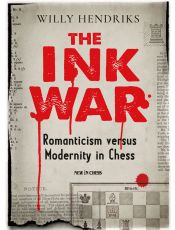The Constitution of Chess
A remarkable fact in the history of chess theory is that very much has been written about 'Steinitz's theory' but nobody tells you where to find it. Lasker and Euwe wrote volumes on that theory without so much as a single quotation from Steinitz. Later writers copied Lasker and Euwe, often without ever having read a syllable from Steinitz. In 1978, Australian correspondence grandmaster and chess author Cecil Purdy did delve into the matter and as a result spoke of 'the great Steinitz hoax': he could find very little about that theory in Steinitz’s writings and therefore thought that what Lasker attributed to Steinitz was actually largely Lasker's own invention. Whether that is true remains to be seen, but it is certain that Lasker, and in his footsteps Euwe, made something special out of the lore of Steinitz's ideas.
I was reminded of this when watching The History Of Chess: The World Championship, released by Chess.com some months ago. This is a compelling documentary in which the viewer is taken through all those matches for the highest title with beautiful pictures and comments by various (grand)masters. Of course, this is a history in highlights, so the very first World Championship match between Steinitz and Zukertort is also covered in a few short fragments. In doing so, that match is portrayed as a clash between romantic attacking chess (Zukertort) and modern positional chess (Steinitz), and with his victory Steinitz is said to have also settled that intrinsic battle in his favour. This is a bit of a shame because this persistent caricature has very little to do with what actually happened. It has been particularly disastrous for Zukertort's reputation because in reality he was a very modern chess player.
In the video, Vishy Anand made frequent appearances and about Steinitz he said that "he was the first who put down those famous rules", who "sat down and wrote the constitution". This is a remarkable comparison, as a constitution is not just some thoughts on paper but a document explicitly stating and elaborating the foundations of a state under the rule of law. That document is available to everyone and, for example, in the case of the United States, the original version can be viewed by anyone in Washington. Here, however, a comparison with the situation we find ourselves in appears a little flawed. Many claim to know exactly what this constitution of Steinitz means, but oddly enough it seems that the original documents can nowhere be found.
Hopefully Chess.com's fine documentary will inspire viewers to delve a little deeper into our rich history. The long-standing rivalry between Zukertort and Steinitz, the birth of modern chess and the conflict between Romanticism and Modernity are the subjects of my recently published book The Ink War. In the book, 'the riddle' of Steinitz's theory receives ample attention. How it was possible that something very different from what he himself put on paper became ‘common knowledge’, is part of this compelling history. It is clear from the title of my book that this was an era marked by struggle. It is sometimes said that history is written by the victors and that applies nicely in this case. It would have pleased Steinitz had he known that many years after that first official World Championship match, one of his successors would describe him as the drafter of our game's constitution. The somewhat tragic story of Zukertort tells a different version of this history.
